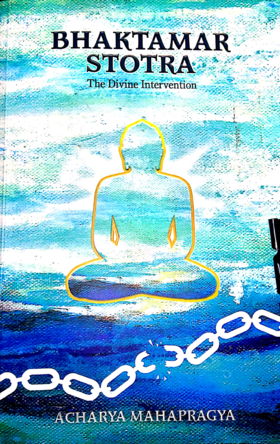There is a significant place of right knowledge in the practice of spirituality. Right conduct too, is of equal importance. The unifying factor between both of them is Stuti (eulogy) which has been extolled since ages. There is an entire chapter of Bhagwan Mahaveer's Stuti in the Jain canonical text "Suyagado". This eulogical chapter, written in the Prakrit language is not only replete with devotion, but also paves way to right knowledge and conduct.
The 'Kalyaan Mandir Stotra' written in Sanskrit language is one of the prominent stotras amongst all eulogical literature. Several 'Ashtakams' (poetic compositions each specifically having 8 verses) have been composed in the form of Stotra. Eulogies can be found in the literature of Acharya Hemchandra. "Chaubisi" (the Stuti of 24 teerthankars) which has been composed in the Rajasthani language by Shrimad Jayacharya, is one of the most exquisite and sensational piece of eulogical literature. Singing of the chaubisi is not only a practice or expression of devotion, but also lays down the Jain fundamentals. This eulogy enables a devotee to follow the right direction of spiritual practice for overcoming ones passions and sensual desires. "Ukkittanam is yet another small, but strikingly famous Stotra, commonly known as "loagassa". It is also an important and powerful Stotra. The 24 teerthankars of the regressive time cycle (Avasarpini Kaal) have been splendidly eulogised by mentioning their names in this Stuti. In last three verses of this eulogy, the devotee seeks blessings for spiritual upliftment.
"Bhaktamar Stotra" is such a eulogy, which has become a harmonious centre of faith for the Shvetamber and Digamber traditions. It has become a keen point of integrity between the different sects of Jainism and this stands as one of the major reasons why this stotra has become very important in the Jain tradition.
A brief history behind the composition of Bhaktamar Stotra is as follows. It was during the time when Varanasi was ruled by King Harshdev. His kingdom was adorned by great poets and eminent scholars who had miraculous powers. They were immensely respected by the king. The minister of the kingdom was an ardent follower of the Jain religion. He once told the king that besides scholars of other faiths, Jain monks also possess miraculous powers which could leave a lasting impression on the King. He ordered to invite them with honour. At that time Acharya Maantung was in Varanasi and the minister invited him to grace the kingdom with his auspicious presence and to exhibit his miraculous powers.
Acharya Maantung said - "A Jain monk is free from mundane desires and refrains from flamboyant display of any inherent miraculous powers". The minister replied - "I very well know that you're detached from this world, but this is a matter of prominence of the Jain religion". Acharya Maantung reached the King's assembly after getting convinced with the minister's point of view. He blessed the assembly and took a seat within the assembly. The king appreciated the Brahman scholars and praised them as they could heal diseases like leprosy with their rigorous austerities. The King then invited Acharya Maantung to exhibit his powers. Acharya Maantung said - "Materialistic attainments do not fascinate me and my ultimate goal is to attain liberation". This made the king furious and he ordered to totally shackle Acharya Maantung in iron chains and put him behind bars.
Jain monks are restricted to exhibit their powers so Acharya Maantung did not want to exhibit his powers. But it was a matter of influence and prominence for the Jain religion. He deeply engrossed himself in the devotion of Lord Rishabh and composed the 'Bhaktamar Stotra'. As he composed each verse, the shackles began to break and fall. King Harshdev was spellbound and was taken aback by this miracle. He was convinced of the prowess of the Jain religion and ultimately accepted Jainism.
Even today, Bhaktamar Stotra has a supreme significance amongst the Jains. Each verse of Bhaktamar Stotra can be recited as a mantra, which yields various benefits in the different walks of life.
His Holiness, Acharya Mahapragya, the 10th Acharya of the Terapanth sect and an erudite scholar of the Jain Shvetamber tradition had given many discourses on this stotra. His discourses would indeed take shape of treaties. This text is an English translation of Acharya Mahapragya's book: 'Bhaktamar Antastal ka Sparsh' May the reader of this book have the splendid experience of touching through the soul of Bhaktamar Stotra.
Auspicious wishes.
Acharya Mahashraman
7 August 2018 Chennai
 Acharya Mahaprajna
Acharya Mahaprajna
